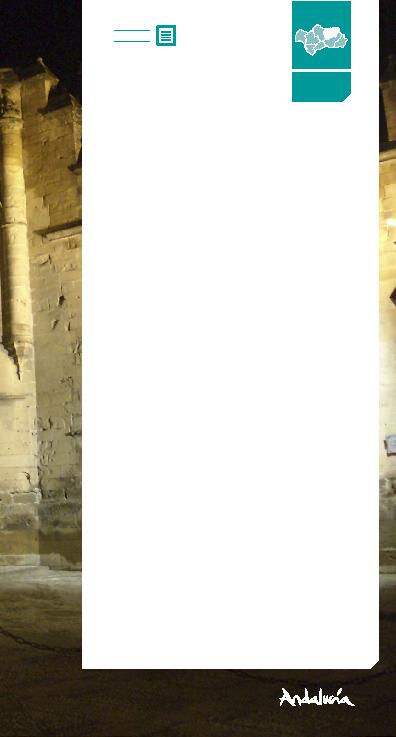
Esta provincia, cabecera del río Guadalquivir, situada entre Sierra Morena y las
Cordilleras Béticas, es un destino especialmente indicado para aquellos que se
inclinan por el turismo de interior. Gracias a sus monumentos naturales e his-
tóricos, cuenta con un paisaje idílico para el disfrute de la naturaleza así como
con numerosos vestigios que han dejado las distintas culturas que por ella han
pasado (íberos, romanos, visigodos, árabes, judíos y cristianos).
Jaén cuenta con cuatro Parques Naturales, lo que representa la mayor super-
ficie de espacios protegidos de España. Además, de una gran riqueza cultural
que permite disfrutar, por ejemplo, de las pinturas neolíticas de Aldeaquemada,
pertenecientes al Arte Rupestre del Arco Mediterráneo Español; de rutas his-
tóricas como la de los Castillos y Batallas, la de los Almohades y Nazaríes, la
del Califato; o del impresionante patrimonio monumental de carácter civil y
religioso del Renacimiento (Úbeda y Baeza)
Esta provincia andaluza es la mayor región productora de aceite de oliva en
España y del mundo y cuenta con las extensiones de campos de olivos más
grandes del país. En la ciudad de Jaén, encontramos la Catedral, declarada Mo-
numento Histórico Artístico, construida sobre una mezquita entre los siglos XVI
y XVIII, uno de los monumentos más destacados de la ciudad, junto al castillo
de Santa Catalina. Pero existen muchos otros que merecen la pena contemplar,
como es el Palacio de Villadompardo, que alberga en su interior tres lugares
de interés: los famosos baños árabes, el Museo de Artes y Costumbres y el
Museo Naïf.
In this province, nestled between the Sierra Morena and Baetic System moun-
tain ranges, we find the source of the Guadalquivir river. It is also an ideal
destination for those who prefer rural tourism. Not only does it offer idyllic land-
scapes to enjoy nature, but it also has numerous monuments and historical
remains of the different cultures and civilisations that have lived in the area
over the centuries: Iberians, Romans, Visigoths, Arabs, Jews and Christians.
Jaén has four natural parks, making it the Spanish province with the largest
total area of protected natural spaces. It is also rich in a cultural sense: from
the cave paintings of Aldeaquemada (a typical example of Neolithic art in the
Spanish Mediterranean area) to a wide range of historical routes (the Castles
and Battles route, the Almohad and Nasrid route, the Caliphate route) and the
impressive Renaissance monuments of both a religious and non-religious na-
ture in Úbeda and Baeza.
The Jaén province has the largest olive groves in Spain and is the biggest
olive oil producer in the world. The Cathedral in the city of Jaén has been of-
ficially declared a historical-artistic monument and was built on top of a former
mosque in the 16th and 17th centuries. Along with the Castle of Santa Catalina,
it is one of the most important monuments in the provincial capital. There are
however, many others worth mentioning, such as the Palace of Villadompardo,
which includes three interesting sites: the famous Arab baths, the Arts and Tra-
ditions Museum and the Museum of Naïve Art.
JA
